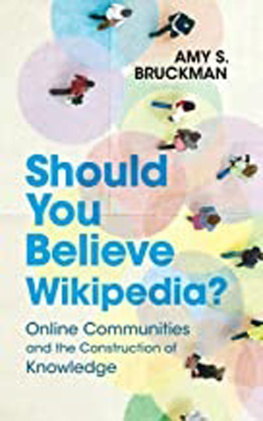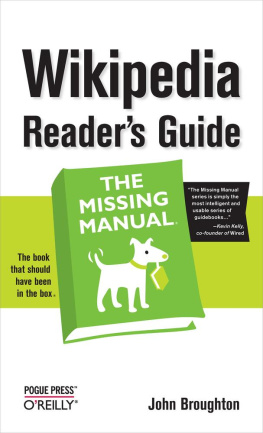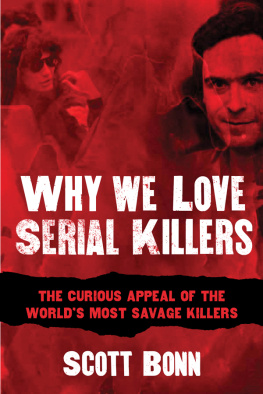

Copyright 2020 by Skyhorse Publishing.
All content is used under the terms of the Creative Commons Attribution Share-Alike license (CC-BY-SA). The license is available for review at the following URL: https://creativecommons.org/licenses/by-sa/3.0/
Some articles have been modified; not every article includes the complete Wikipedia text. Articles have been edited to include the most relevant information only.
All images are in the public domain unless otherwise noted. More information about each image can be found at the article URLs listed on .
First Skyhorse Publishing edition 2019. All rights to any and all materials in copyright owned by the publisher are strictly reserved by the publisher. All inquiries should be addressed to Skyhorse Publishing, 307 West 36th Street, 11th Floor, New York, NY 10018.
Skyhorse Publishing books may be purchased in bulk at special discounts for sales promotion, corporate gifts, fund-raising, or educational purposes. Special editions can also be created to specifications. For details, contact the Special Sales Department, Skyhorse Publishing, 307 West 36th Street, 11th Floor, New York, NY 10018 or .
Skyhorse and Skyhorse Publishing are registered trademarks of Skyhorse Publishing, Inc., a Delaware corporation.
Visit our website at www.skyhorsepublishing.com.
10 9 8 7 6 5 4 3 2 1
Library of Congress Cataloging-in-Publication Data is available on file.
ISBN: 978-1-5107-5538-3
eBook: 978-1-5107-5539-0
Cover design by Kai Texel
Printed in the United States of America

Table of Contents
Notes from The Editors
All content is used under the terms of the Creative Commons Attribution Share-Alike license (CC-BY-SA). The license is available for review at the following URL: https://creativecommons.org/licenses/by-sa/3.0/
Some articles have been modified; not every article includes the complete Wikipedia text. Articles have been edited to include the most relevant information only.
All images are in the public domain unless otherwise noted. More information about each image can be found at the article URLs listed on page 520.
All citations, references, and footnotes for each article, including bibliographies and suggestions for further reading, are available online at the URLs listed on page 520.
Rodney Alcala
RODNEY ALCALA |

Mugshot of Alcala taken at San Quentin State Prison, September 1997 |
Born | Rodrigo Jacques Alcala Buquor August 23, 1943 (age 76) San Antonio, Texas, U.S. |
Other names | The Dating Game Killer John Berger John Burger Rod Alcala |
Conviction(s) | Battery, kidnapping, murder, probation violation, rape, providing cannabis to a minor |
Criminal penalty | Death |
Details |
Victims | 8130[1][2][3] |
Span of crimes | June 19681979 |
Country | United States |
State(s) | Washington (possibly) California New York Wyoming |
Date apprehended | July 24, 1979[4] |
Imprisoned at | California State Prison, Corcoran |
Rodney James Alcala (born Rodrigo Jacques Alcala Buquor ; August 23, 1943) is an American convicted rapist and serial killer. He was sentenced to death in California in 2010 for five murders committed in that state between 1977 and 1979.[1] In 2013, he received an additional sentence of 25 years to life after pleading guilty to two homicides committed in New York in 1971 and 1977.[5] His true victim count remains unknown, and could be much higher.[6][7][8]
Alcala compiled a collection of more than 1,000 photographs of women and teenage boys, many in sexually explicit poses. In 2016, he was charged with the 1977 murder of a woman identified in one of his photos.[9] He is known to have assaulted one other photographic subject, and police have speculated that others could be rape or murder victims as well.[10]
Prosecutors said that Alcala toyed with his victims, strangling them until they lost consciousness, then waiting until they revived, sometimes repeating this process several times before finally killing them.[10][11] One police detective described Alcala as a killing machine,[12] and others have compared him to Ted Bundy.[13]
He is sometimes called the Dating Game Killer because of his 1978 appearance on the television show The Dating Game in the midst of his murder spree. Alcala used his good looks and charm to his advantage when approaching women.[14]
Early life
Rodney Alcala was born Rodrigo Jacques Alcala Buquor in San Antonio, Texas, to Raoul Alcala Buquor and Anna Maria Gutierrez.[15] In 1951, Alcalas father moved the family to Mexico, then abandoned them three years later. In 1954 his mother moved Alcala and his siblings (two sisters and a brother) to suburban Los Angeles when he was about 11 years old.[16][17]
In 1960, at age 17, Alcala joined the US Army and served as a clerk. In 1964, after what was described as a nervous breakdownduring which he went AWOL and hitchhiked from Fort Bragg to his mothers househe was diagnosed with antisocial personality disorder[18] by a military psychiatrist and discharged on medical grounds.[19] Other diagnoses later proposed by various psychiatric experts at his trials included narcissistic personality disorder, borderline personality disorder, and (from homicide expert Vernon J. Geberth) malignant narcissistic personality disorder with psychopathy and sexual sadism comorbidities.[20]
After leaving the Army, Alcala graduated from the UCLA School of Fine Arts and later studied film under Roman Polanski at New York University.[10]
Early criminal history
Alcala committed his first known crime in 1968: a motorist in Los Angeles called police after watching him lure an eight-year-old girl named Tali Shapiro[21] into his Hollywood apartment. The girl was found alive, raped and beaten with a steel bar, but Alcala had fled.[22] To evade the resulting arrest warrant, Alcala left the state and enrolled in the NYU film school, using the name John Berger. In 1971, he obtained a counseling job at a New Hampshire arts camp for children using a slightly different alias, John Burger.[10] In June 1971, Cornelia Michel Crilley, a 23-year-old TWA flight attendant, was found raped and strangled in her Manhattan apartment. Her murder remained unsolved until 2011.[23]
The FBI added Alcala to its list of Ten Most Wanted Fugitives in early 1971;[24] a few months later, two children attending the arts camp noticed his photo on an FBI poster at the post office. Alcala was arrested and extradited to California. By then, Shapiros parents had relocated their entire family to Mexico and refused to allow her to testify at Alcalas trial.[21] Unable to convict him of rape and attempted murder without their primary witness, prosecutors were forced to permit Alcala to plead guilty to a lesser charge of assault.[25]
Next page











